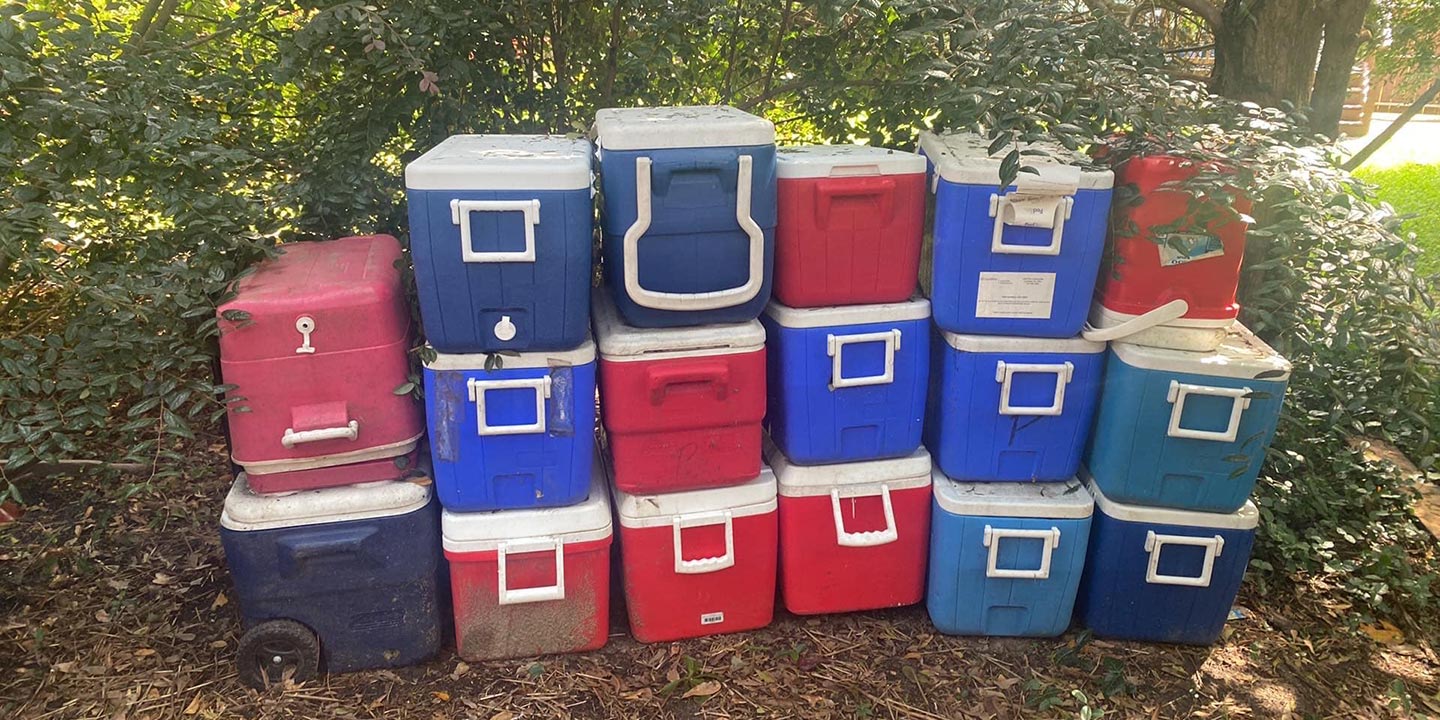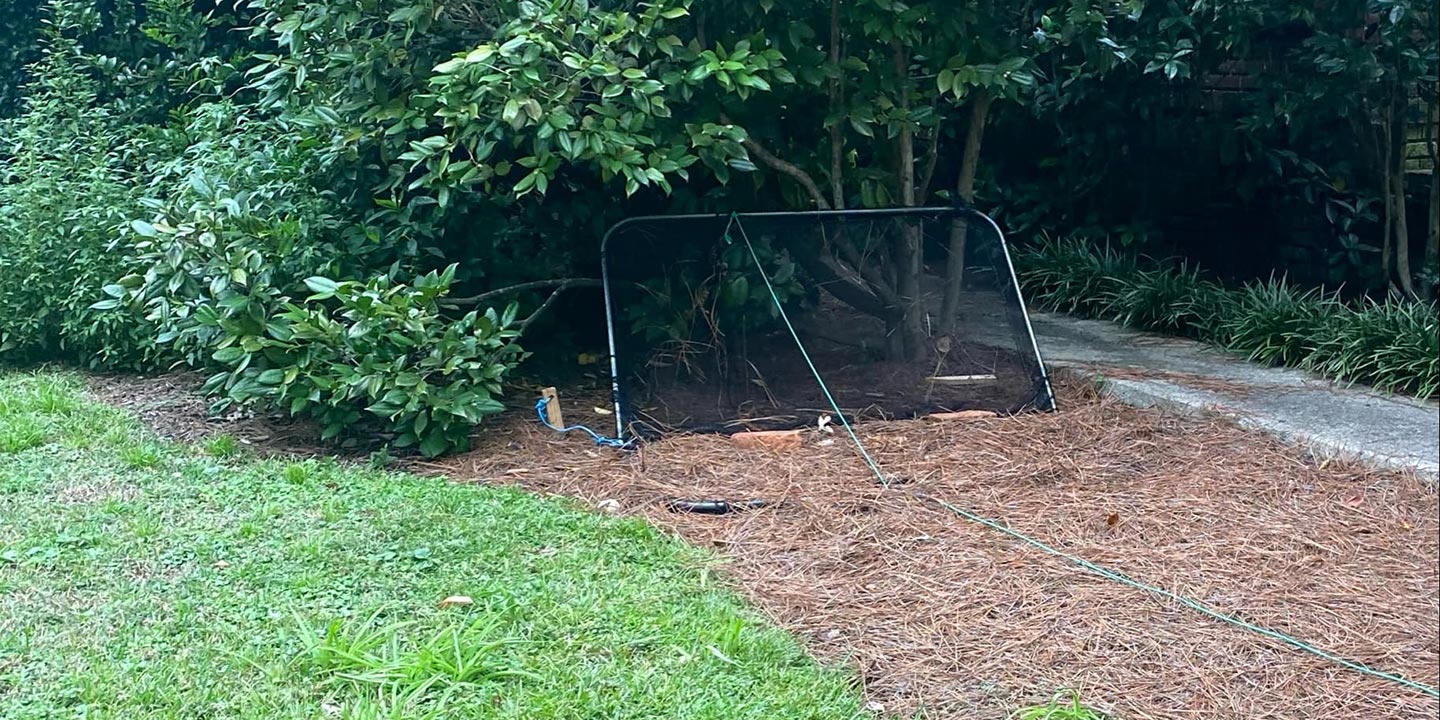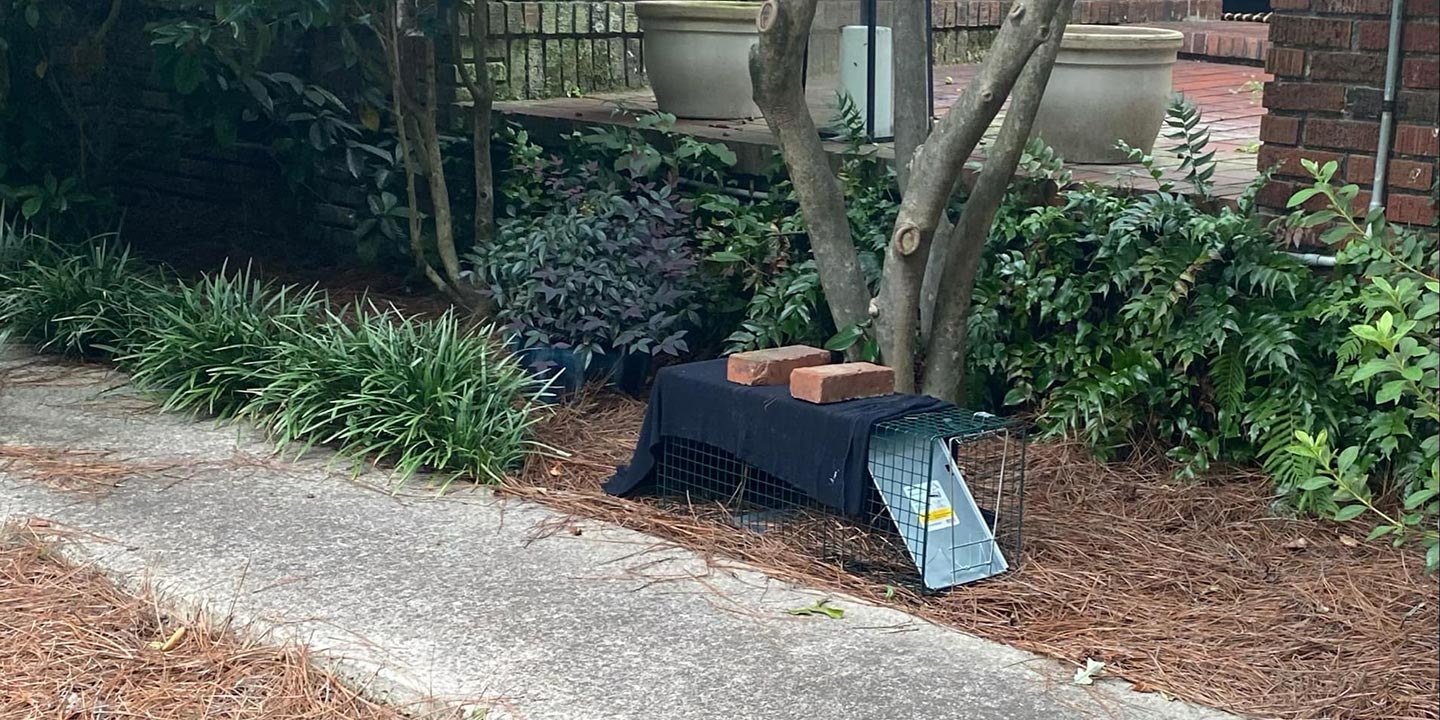One of the cats Katie Williams and Fran Owens caught recently in their traps. (Photo courtesy of Katie Williams/Carolina News & Reporter)
Katie Williams isn’t planning a barbecue anytime soon. She’s not going to any tailgates in the near future. But coolers of all shades of red and blue fill up an entire section of her backyard.
She’s using the coolers to keep her neighborhood cats warm.
Williams has been working with her friend, Fran Owens, to make shelters out of coolers for the feral cat colony in the Hollywood-Rose Hill neighborhood as cooler months approach.
“It’s always wonderful to see these cats turned into these loving pets,” Owens said. “But if they’re not, they still deserve a decent life.”
The project is one of many things the pair is doing to improve the colony’s quality of life.
Owens and Williams are working to trap, neuter and return the cats to the outdoors, a process used to control feral cat colony populations.
They have set up humane traps around the neighborhood, lure the cats in with food and take turns waking up early to check the traps. They then take the captured cats to the Humane Society’s spay/neuter/vaccine clinic when it opens.
The clinic provides services to feral cats on a first-come, first-served basis. Owens and Williams always want to be first.
Spaying and neutering is the most important thing for the future of the colony, they said.
“Our neighborhood is great,” Williams said. “There’s so many people that love cats. And I know that they’ll be taken care of. It’s just making sure they’re not keeping producing.”
Colony populations can increase quickly and exponentially if feral cats are not spayed or neutered, said Pat Peters of Feral Cat Solutions of Chapin. But population numbers aren’t the only problem.
“If everybody said, ‘OK, we don’t care how many cats are in the neighborhood,’ and you allow them to inbreed, it would just have monstrous results,” Peters said.
Owens and Williams care for the cats while the cats recover, then return them to freely roam the neighborhood. The pair knows the cats will be happiest living an outdoor life. And the neighborhood loves having built-in rodent control.
“These cats do not want to live in anybody’s home, and they do not want you to pet them,” Owens said. “But they do deserve a healthy life.”
And the duo definitely won’t send them to already overcrowded shelters, they said.
“Most of the county shelters are going to euthanize on the spot, if they’ll even take the cat in,” Peters said. “And a lot of them won’t accept a feral cat. So there’s no future for them at a shelter.”
But the work doesn’t stop once the cats have been trapped, neutered and returned. They must be fed and taken care of, Peters said.
The coolers in Williams’ backyard will be a part of the continued care of the colony, she said. She cares for them even if they don’t cuddle with her as a reward. It’s a responsibility she can’t ignore.
“It’s just hard to turn your back on,” Williams said.
Williams and Owens said it has taken a village to look after the colony — a village they’re proud to be a part of and a mission they’re ready to continue into the winter with the shelters.
“If you’re a decent person, you have empathy and you want to help those less fortunate than you — people and animals,” Owens said.
Coolers in Williams’ backyard that she will turn into cat shelters (Photo courtesy of Katie Williams/Carolina News & Reporter)
A clam trap set up to capture a cat (Photo courtesy of Katie Williams/Carolina News & Reporter)
One of the traps Williams and Owens use to capture the feral cats (Photo by Katie Williams/Carolina News & Reporter)





